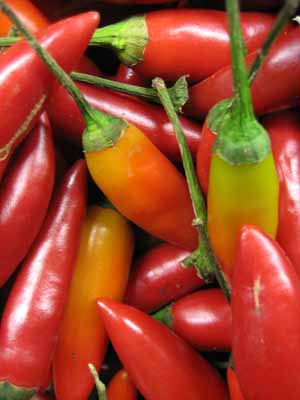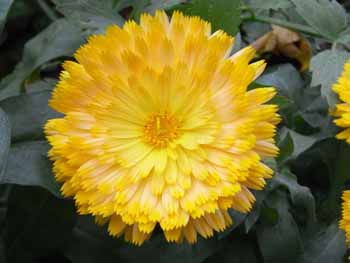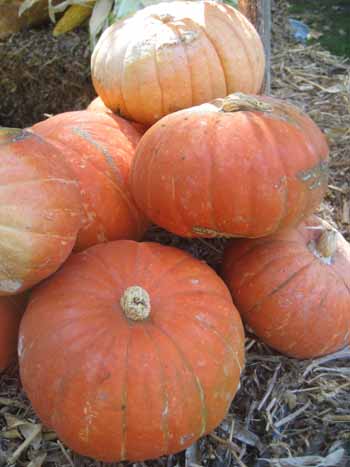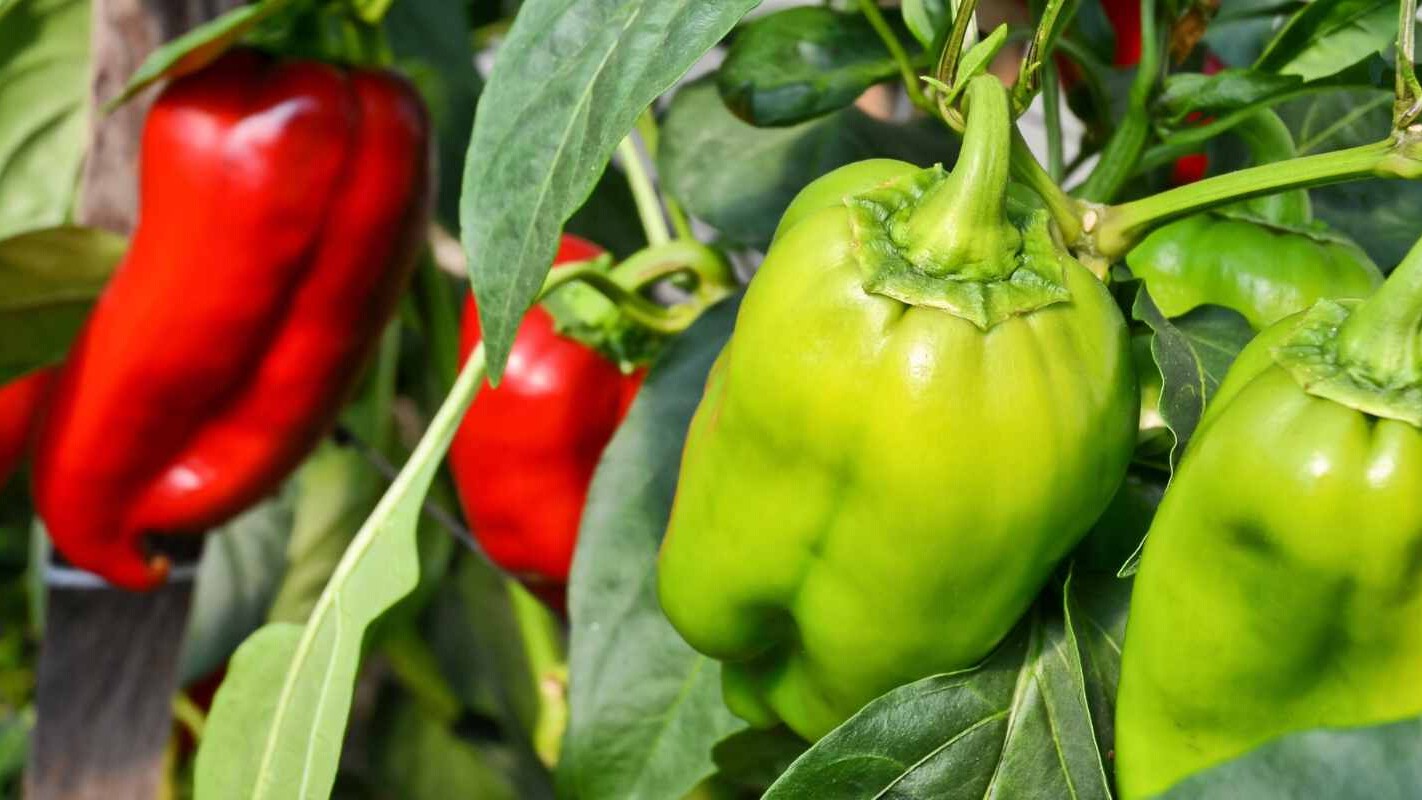Life really starts ramping up festive wise at this time of year, so it is important to know some December gardening tips! Hopefully you’ve already put in loads of produce plants but it’s not too late to get some more growing, especially if you’ve had the pleasure of already harvesting some plants. Keep up the good work in the garden – despite the rising heat there’s still plenty to do this month in your patch. And with Christmas coming, there are plenty of ways you can create gifts for family and friends. Get some tips!
 And if you’re heading off on a trip this break, read our tips on preventing “holiday-itis” in the garden. It’s an all too common occurrence that can turn the most beautiful backyard into a garden grave in a matter of weeks! Give your garden the gift of a bit of your time this December… you’ll be so pleased you did!
And if you’re heading off on a trip this break, read our tips on preventing “holiday-itis” in the garden. It’s an all too common occurrence that can turn the most beautiful backyard into a garden grave in a matter of weeks! Give your garden the gift of a bit of your time this December… you’ll be so pleased you did!
Warm Areas
Frost free or occasional light frosts (North from about Coffs Harbour and all the way across to the west to Geraldton)
- It’s pretty warm, and fairly humid this month, but there are a few things you could still pop into the patch. You can put in some capsicum, chilli, eggplant, carrots, lettuce, tomatoes and zucchini.
- Too hot for most herbs, but you could try some lemongrass.
- Still time to pop in some asparagus… just find a cooler spot in the patch.
- It’s not too late for watermelon, bananas, mangos and passionfruit. Try a Bromaliaceae that fruits as well, sound crazy? Pop in a pineapple and see… perfect for summer Daiquiris!
- Plants feel the need for a feed at this time of year. A seaweed tea or low environmental impact liquid fertiliser is perfect, especially for the seedlings put in during November. They are probably in need of a bit of a feed by now. Apply to the soil early in the morning, and in the concentrations mentioned on the packet.
- Try some companion plants as well as these pretties: marigolds, cosmos and sunflowers. Popping these in around your veggies will give some colour and interest to the patch, and act as beneficial insect attractors!
- Consider a green manure crop to add some life and love to an overworked patch. At this time of year, try millet, lablab, or cow pea. This will improve your soil incredibly and for a bit of forward planning, you’ll find it well worth the effort! You just have to have a bit of forethought to what you want to plant in that space come the time to ‘dig over.’
- Top up mulch on your veggie patches, herb gardens and ornamental beds, especially important if you are heading off this holidays. A hot summer tip is to mulch after watering the patch, to a depth of about 7cm. Keep mulch clear of plant stems. Especially young seedlings. Choose a sustainable, low environmental impact mulch, one that will enrich your soil as it breaks down.
- On non-gardening days head out to the shed and construct a couple of shade cloth tents. They don’t have to elaborate, just a simple, moveable structure that you can pop over the top of some of the sun sensitive veggies (like eggplant, capsicum and others) as the heat becomes more intense. Think of it as slip, slop, slap for plants! Pop these around where required, especially on high UV days, windy days, and during your holidays.
- Going away? Consider installing a drip irrigation system in your patch before you leave. These systems deliver water where it is needed, the roots, and when covered by mulch, are invisible garden lifesavers! Install on a tap timer and you’re set! Make sure you choose one appropriate to the needs of your plants; they come with a variety of ‘drips per minute.’
- Weeding is an awesome job to do at this time of year. Cut down the competition between your produce plants and the weeds and tidy up your patch. It may sound tedious, but it’s incredibly rewarding! Weeds use nutrients that you have set aside specifically for your produce plants, don’t let it leach away!
- Protect your pot plants while you are away this summer. Mulch the top of the pots, sit them in a saucer of water (or the bathtub if it gets enough light) and you’ll be set! Or even run dripper lines to them from your main irrigation pipes.
- Give the gift that keeps on giving. A productive pot plant! There are potted plants to suit every back pocket, and some awesome selections include chillies, cherry tomatoes, citrus, olives or a mixed herb pot. Get creative… and get giving!
Cool to Cold Areas
Low temperatures for extended periods of time (all of Tasmania, most of Victoria, the southern highlands of NSW, the ACT and a tiny southern bit of SA)
- It’s a great time of year in the garden in this part of the world, and it’s not too late to pop these into the herb patch: dill, basil, chives, parsley, rosemary, pyrethrum, sage and thyme. Pop some mint into a couple of pots – good to grow now but it can take over if planted in the patch!
- Add some of these highly productive plants to your patch this month; carrots, cucumber, eggplants, lettuce, french beans, leeks, pumpkins, silverbeet, squash, sweet corn and zucchini.
- It doesn’t all have to be all edible, flowering plants assist to attract insects for pollination as well as making the area look great. Plant out some of these; celosia, petunias, snapdragons, phlox, marigolds and verbena.
- Top up mulch on your veggie patches, herb gardens and ornamental beds, especially important if you are heading off this holidays. A hot summer tip is to mulch after watering the patch, to a depth of about 7cm. Keep mulch clear of plant stems. Especially young seedlings. Choose a sustainable, low environmental impact mulch, one that will enrich your soil as it breaks down.
- Green manure crops, including soy bean, wheat, millet and mung beans are good to go now. Improve that veggie patch that may be a bit nutrient deficient. Doing this will ensure that you are ready for the next seasons heavy feeding plants.
- Plants feel the need for a feed at this time of year. A seaweed tea or low environmental impact liquid fertiliser is perfect, especially for the seedlings planted in during November. They are probably in need of a bit of a feed by now. Apply to the soil early in the morning, and in the concentrations mentioned on the packet.
- On non-gardening days head out to the shed and construct a couple of shade cloth tents. They don’t have to elaborate, just a simple, moveable structure that you can pop over the top of some of the sun sensitive veggies (like eggplant, capsicum and others) as the heat becomes more intense. Think of it as slip, slop, slap for plants! Pop these around where required, especially on high UV days, windy days, and during your holidays.
- Going away? Consider installing a drip irrigation system in your patch before you leave. These systems deliver water where it is needed, the roots, and when covered by mulch, are invisible garden lifesavers! Install on a tap timer and you’re set! Make sure you choose one appropriate to the needs of your plants; they come with a variety of ‘drips per minute.’
- Weeding is an awesome job to do at this time of year. Cut down the competition between your tasty treats and these space invaders and tidy up your patch. It may sound tedious, but it’s incredibly rewarding! Weeds use nutrients that you have set aside specifically for your produce plants, don’t let it leach away!
- Protect your pot plants while you are away this summer. Mulch the top of the pots, sit them in a saucer of water (or the bathtub if it gets enough light) and you’ll be set! Or even run dripper lines to them from your main irrigation pipes.
- Give the gift that keeps on giving. A productive pot plant! There are potted plants to suit every back pocket, and some awesome selections include chillies, cherry tomatoes, citrus, olives or a mixed herb pot. Get creative… and get giving!
Temperate Zones
Occasional winter frosts (pretty much the rest of Australia, most of the inland, some areas of Victoria, most of SA and the southern area of WA)
- It is pretty warm, so if you are heading away for a while, it’s probably best to avoid planting at this stage. If you are hanging around at home, why not try some of these favourites; silverbeet, lettuce, leek, beans, corn, squash (summer), leek, eggplants, beetroot, carrots, chilli, cucumber, pumpkin and zucchini.
- For some super herbs in the temperate areas, try basil (both sweet and purple), parsley, pyrethrum and lemongrass. Mint can be planted now but you might want to keep it in a nice sized pot, just to prevent serious mint invasion!
- Why not try some lovely flowering stuff in your patch as well. Nasturtium, verbena, petunias, marigolds, phlox and celosia are great at attracting pollinators and beneficial insects to your patch. They add a touch of pretty to your patch too.
- Consider a green manure crop to add some life and love to an overworked patch. At this time of year, try cow pea, mung bean, soy bean and millet. This will improve your soil incredibly, and return some nutrients that are needed for healthy vigorous growth. With a bit of forward planning you’ll find it well worth the effort!
- Plants feel the need for a feed at this time of year. A seaweed tea or low environmental impact liquid fertiliser is perfect, especially for the seedlings planted in during November. They’ll be ready for a bit of a feed by now. Apply to the soil early in the morning, and in the concentrations mentioned on the packet.
- Top up mulch on your veggie patches, herb gardens and ornamental beds, especially important if you are heading off this holidays. A hot summer tip is to mulch after watering the patch; to a depth of about 7cm. Keep mulch clear of plant stems, especially young seedlings. Choose sustainable, low environmental impact mulch, one that will enrich your soil as it breaks down like pea or lucerne straw.
- On non-gardening days, why not head out to the shed, and construct a couple of shade cloth tents. They don’t have to elaborate, just a simple, moveable structure that you can pop over the top of some of the sun sensitive veggies (like eggplant, capsicum and others) as the heat becomes more intense. Think of it as slip, slop, slap for plants! Pop these around where required, especially on high UV days, windy days, and during your holidays.
- Going away? Consider installing a drip irrigation system in your patch before you leave. These systems deliver water where it is needed, the roots, and when covered by mulch, are invisible garden lifesavers! Install on a tap timer and you’re set! Make sure you choose one appropriate to the needs of your plants; they come with a variety of ‘drips per minute.’
- Weeding is an awesome job to do at this time of year. Cut down the competition between your tasty treats and these space invaders and tidy up your patch. It may sound tedious, but it’s incredibly rewarding! Weeds use nutrients that you have set aside specifically for your produce plants, don’t let it leach away!
- Protect your pot plants while you are away this summer. Mulch the top of the pots, sit them in a saucer of water, or the bathtub if it gets enough light, and you’ll be set! Or even run dripper lines to them from your main irrigation pipes.
- Give the gift that keeps on giving. A productive pot plant! There are potted plants to suit every back pocket, and some awesome selections include chillies, cherry tomatoes, citrus, olives or a mixed herb pot. Get creative… and get giving!
Of course, this is just a rough guide, many of you will find your situation varies from the above listing, due to microclimates created in your garden, location in relation to your nearest major city, extremes of weather and garden type.
But the one thing that remains the same for all zones and regions is this: the festive season is better outdoors! So, grab a cool beverage, slip, slop slap, and spend some time under your favourite tree, admiring your patch!
The SGA team would like to wish all of our readers (and their gardens) a safe and happy holiday season… see you back here next year!
Information sources: Bagnall, Lyn, Easy organic gardening and moon planting, published by Scribe Publications, VIC. McFarlane, Annette, Organic Vegetable Gardening, published by ABC Books, Sydney, NSW.
Photos: Joanne Bate, Elaine Shallue, Mary Trigger
Related Articles:
January In Your Patch
Wondering what to do in January in your patch? What vegetables and herbs should you plant? It's the start of the New Year and whether it's time for a…
February In Your Patch
Because it is warmer than summers 10 years ago, you might need to change what you normally do your garden. Maybe in February in your patch some of…





